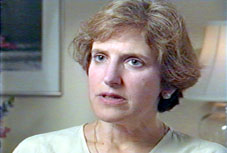 |
|
|
Videos
PO Box 2480Nevada City, CA 95959
Phone/Fax: 800-345-5530
(530-477-0701 outside US and Canada)
Email: info@cavalcadeproductions.com
 A Video Series on:
A Video Series on:
Vicarious Traumatization
Vicarious traumatization–the cumulative impact of trauma clients' stories and reenactments–can carry enormous emotional costs for therapists. This video series describes the pervasive effects of vicarious traumatization, and what can be done to counteract those effects. In addition, seven clinicians specializing in trauma work relate their experiences with vicarious traumatization in very human terms. Released 1995. Vicarious Traumatization I: The Cost of Empathy Vicarious Traumatization II: Transforming the Pain Purchase price: One VHS/DVD $150, both $250 Customers who bought this video series also bought: About the Presenters Laurie Anne Pearlman, PhD is Director of Research at the Traumatic Stress Institute/Center for Adult & Adolescent Psychotherapy (TSI/CAAP). She is co-author with I. Lisa McCann of Psychological Trauma and the Adult Survivor (Brunner/Mazel, 1990), and with Karen Saakvitne of Trauma and the Therapist (WW Norton, 1995). Karen W. Saakvitne, PhD is Clinical Director of TSI/CAAP. She specializes in psychoanalytic therapy with survivors of interpersonal trauma, and is co-author of Trauma and the Therapist. Paul Adler, PhD is a clinical psychologist in private practice in Springfield, MA. Denise Elliott, PhD is a clinical psychologist and Director of the Center for Women’s Development at HRI Hospital in Brookline, MA. Richard Fournier, MDiv is the minister of the First Congregational Church in Springfield, MA and a pastoral counselor.. Chris Neiman, LICSW is a social worker specializing in chemical dependency and trauma at the Beacon Clinic in Greenfield, MA. Anne C. Pratt, PhD (drannepratt.com) is a forensic psychologist who practices in Springfield, MA. Sandy Streifender, MA is an expressive arts therapist in private practice in Middletown, CT. Carol Thompson, MFT is a marriage and family therapist in private practice in East Lyme, CT. The Trainer’s Guide The 40-page trainer’s guide includes objectives, reproducible viewer outlines, review and discussion questions, a resource list, and a book chapter, described below. Pearlman and Saakvitne’s book chapter, "Treating therapists with vicarious traumatization and secondary traumatic stress disorders," is abstracted as follows: Psychotherapists who treat trauma survivor clients are susceptible to vicarious traumatization and secondary traumatic stress disorder. Therapists of adult survivors of childhood sexual abuse, in particular, will find their inner experience of self and other transformed in ways that parallel the experience of the trauma survivor. This transformation, which we term vicarious traumatization, includes changes in the therapist’s frame of reference, including identity and world view, self capacities, ego resources, psychological needs and cognitive schemas, and sensory experience (Constructivist Self Development Theory, or CSDT; McCann & Pearlman, 1990c). Thus, the term includes both the symptoms of secondary post traumatic stress and the changes in meaning, identity, and world view described in CSDT. Treatment of the vicariously traumatized therapist and prevention of secondary post traumatic stress must focus on three realms: personal, professional, and organizational. This chapter outlines specific strategies in each realm to counteract the negative effects of trauma therapy on the therapist. The strategies emphasize the need for balance, use of external resources, self-attunement, connection, and the need to foster one’s sense of meaning, interdependence, and hope. |
